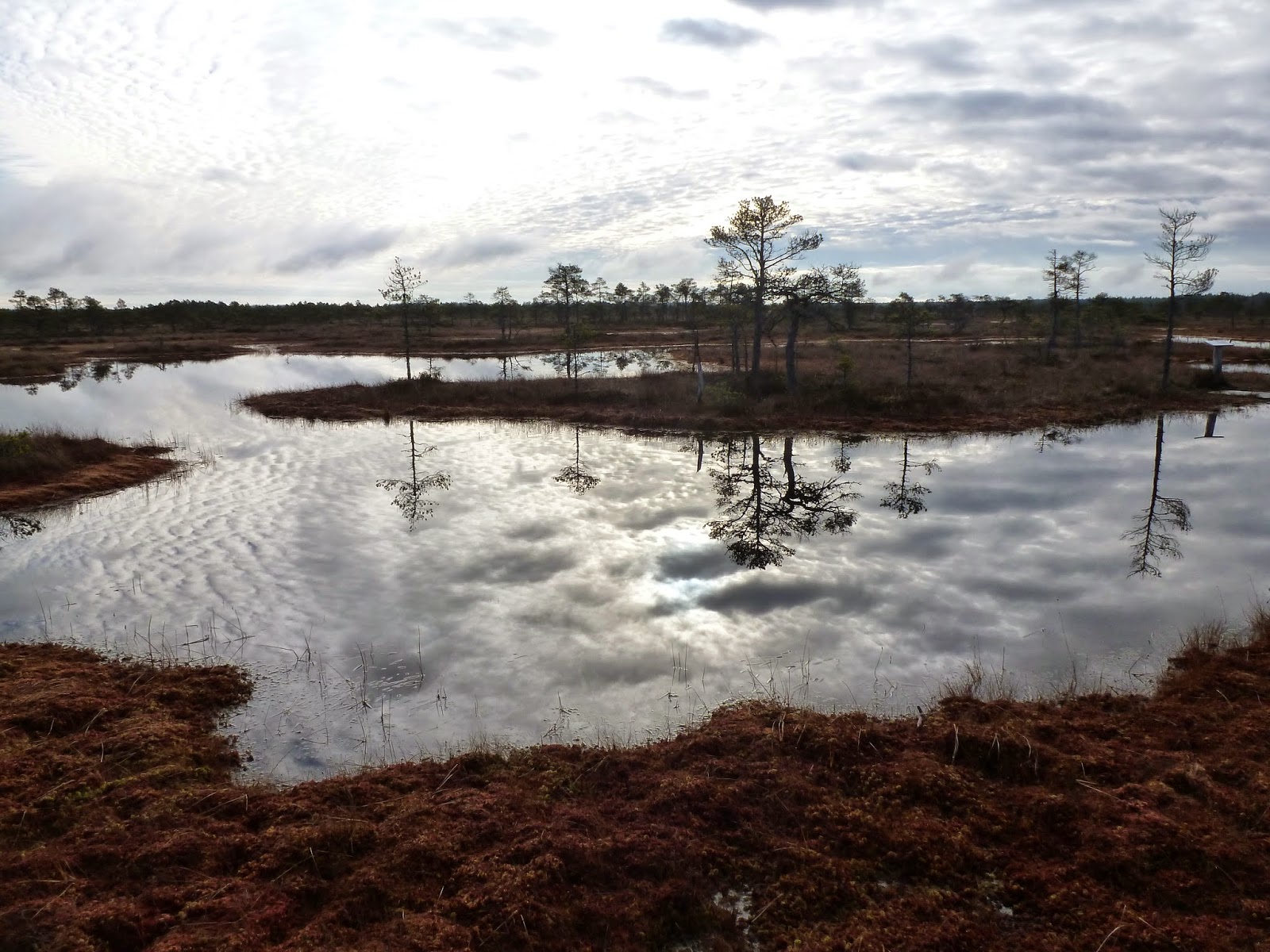For all people North of the tropics, Autumn is best symbolised by the beautiful mix of colours when trees start limiting the nutritional support to their leafs, which turn yellow and red before covering the forest grounds with a soft, colourful carpet. Nevertheless, Autumn comes in different times and feels in different regions. What we get here is far from the long, late Autumn of Western Europe and even further from the pleasant Indian Summer of Québec. Mainly because Estonia is not blessed by the Gulf Stream.
As I pointed out in a previous post, Autumn can also be characterised by the departure of migrating birds (see The Great Migration). Or, in a less official manner, by the temperature of open air bodies of water, "if you can't swim (without wetsuit) without being frozen to death, summer is over"! In Estonia, Autumn starts somewhere in August (this year was fairly good, and it came rather towards the end of the month) and the magic colours of the trees can be enjoyed at their best early October, until the cold wind washes all leafs away. Today, First of November, there is no leaf left on trees in Tallinn. But if you head to forests and bogs inner land, you can still enjoy great colours.
Inventing fire in Valgejärve
Around Valgejärve, which means the white lake, you find a large variety of landscapes, ranging from a bog that does not look like others to hilly forests. A bog is usually characterised by a very poor ecosystem (very few nutrients and species) and it is the case here too. On the other hand, this bog has a lot of grassland that is unusual.
Mid-October, we join a few colleagues of Katri for a walk in Valgejärve. What made the episode interesting is a small misunderstanding. As in all RMK sites, there is a barbecue spot, and here there is even a big tipi of the Indian American style that fits over 10 people. We expected to share a barbecue with the group and brought sausages to grill. Something felt odd when we noticed that everyone had brought sandwiches except us, and no one had matches or a lighter to make fire... In a group of Estonians going to the woods, it is really bad luck not to have anyone with the needed stuff to make fire. On the other hand, it would be even more bad luck not to have anyone with the skills to make fire out of the environment. So we received a demonstration of a few ways to make fire... Unfortunately, there was no sunshine and no silex stone, so any attempt - even the most sophisticated - failed.
 |
| Some more species for my mushroom in the nature collection |
Wet feet in Kakerdaja
The forest of Kakerdaja offers a nice forest to walk and has a huge with a nice boardwalk of 3,5 kilometres across of it.
First weekend of November. Close to the seaside, trees are already naked and the leafs in town have been removed during the last week (for the record, I saw the removal team operating on a pitch dark kids playground at 21:00 on Thursday night... another anachronism, from my Belgian perspective). In the inner forest grounds of Kõrvamaa, colours are still plentiful.
Despite the temperatures close to 0°C, the sunshine has invited many people to this beautiful bog. People are all warmly dressed, with hats and gloves, nature lovers and enjoying the beautiful day. What actually differentiates them quite a bit is their footwear... and in this particular case, it matters. Part of the boardwalk, especially around the main lake, is damaged and has sunk under water. So, there is a high risk of getting wet (and water is of course not warm). It is true, most boardwalks are accessible to light shoes, even flip-flops or barefoot, as they are flat and comfortable. Here, some stretches were sinking so that you would have water up to the ankles. We had hiking boots - not high enough for the worst parts, so we had to circle in the bogs, took some risk but managed to stay dry. The lucky ones had rubber boots. The unprepared ones were with sport shoes. The silly ones where in sneakers... Board walks are popular and require regular maintenance. Moreover, it happens in some places (it was the case once in South Estonia) that beavers create dams in some places that raise the water level around. Plenty of things can make a simple walk much more exciting than expected...
Only disappointment of the day: we had hopes to find cranberries in the bog. Nothing. Too many passers-by on the main path and it was too wet to leave it to access remote places.
All wet in Jussi lakes
The next day was also wet, but in a different way. No sun today, only rain. We decide to explore another side of Körvamaa: the RMK trail around Jussi lakes. It is a very nice walk with a lot of variety, hills with heather, forests, lakes, and a bit of boardwalks around the lakes. A place to visit again with nicer weather...
Finally, I could find some clear evidence of beaver activities. Many trees around the long lake were bitten and beaver teeth traces were obvious. Beavers use these trees to build dams behind which they live.
 |
| Trees bitten by beavers around the Jussi lake |








No comments:
Post a Comment